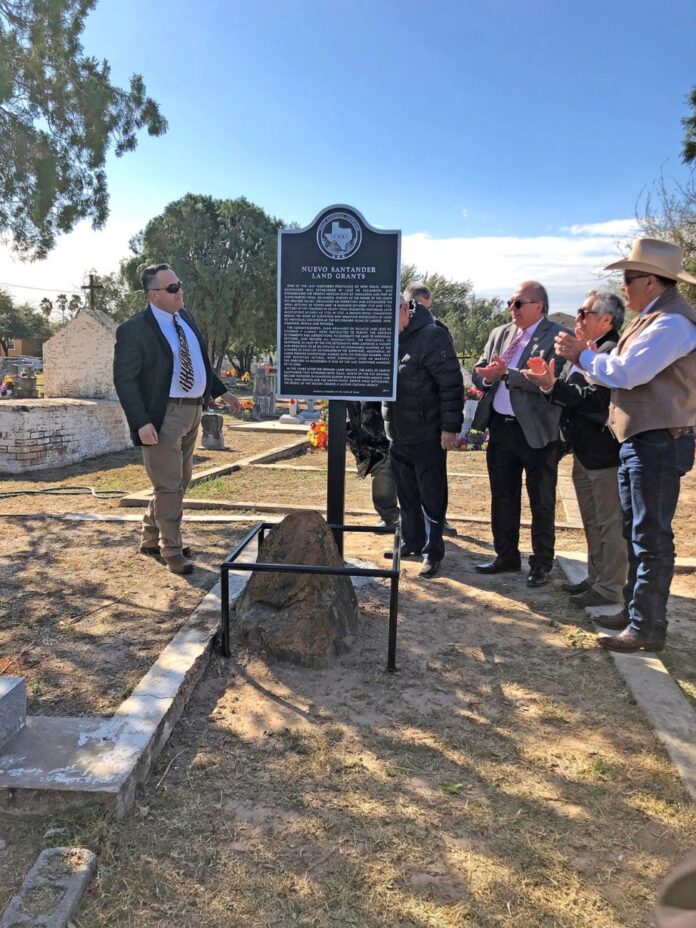ROMA — It doesn’t appear particularly remarkable on first glance, but a stone — no taller than a toddler — that rests between the graves of the Los Saenz Cemetery here could tell centuries-old stories of this land.
The stone, called a mojonera, is believed to be over 250 years old and was the subject of a ceremony this week to unveil a historical marker from the Texas Historical Commission.
Roma and Starr County officials endured the strong winds Wednesday morning to witness the unveiling of the marker which recognized the mojonera and its significance to the history of the Spanish land grants.
Land grants were allocations of property to colonists who settled here. The Rio Grande Valley was part of a Spanish province called Nuevo Santander, which was one of the last northern provinces of New Spain, according to the Texas Historical Commission.
Nuevo Santander was established by José De Escandón and encompassed present-day Tamaulipas and part of Trans-Nueces, Texas.
When the settlements were surveyed to be distributed to the settlers, “the porciones, or partitions, in each of the five settlements were assigned a number and required to be delineated by recognizable markers at the corners of each lot,” according to the historical marker.
Used as a reference point for those settlements were the mojoneras, or large pointed sandstones, marked with the portion number, year, and surveyor initials.
The mojonera for Porcion 74, which was the one recognized during Wednesday’s ceremony, has an inscription dated July 23, 1767.
To honor the mojonera, local historian Jesus Correa applied for a state historical marker in 2013.
“It took about seven years to get it done,” Correa said. “I’m glad we have it because it’s very important for us for every single person to know how this place was settled.”
He added that although the marker states this mojonera is just one of the last of its kind, Correa said that to his knowledge, it is the only one in the area.
In his remarks during the unveiling ceremony, Correa said the story of the mojonera was a beautiful one and urged for the appreciation of the historical buildings here.
“Here we don’t have pyramids,” he said. “But we do have a lot of history.”
For Ross Barrera, chair of the Starr County Historical Commission, he said it was important to pass that history along to the generations to come and stressed that neglecting to do so would be to fail as a community.
He added the historical commission was working toward setting up a county museum or cultural center and went on to praise the city of Roma for obtaining the historical marker.
“This is our history here,” Barrera said. “One thing we always want to remember or we need to know is that we have to know where we come from before we know where we’re going.”




